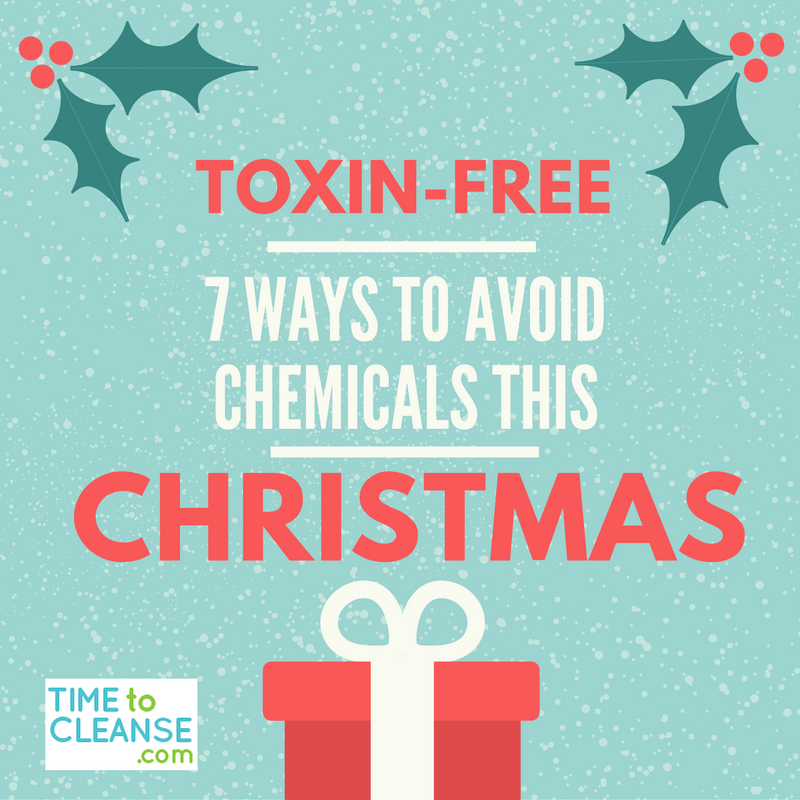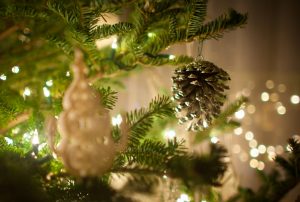
Christmas is a magical time of year. However, it can also be the most toxic. We’re not talking about the abundance of toys that turn your kids into greedy Grinches. We’re referring to the abundance of chemicals that can make Christmas a health hazard. We’ll break down some of the most common Christmas toxins and give you tips about how to avoid them this holiday season.
Use Christmas Light Alternatives
A 2010 USA today article explained that almost every strand of Christmas lights contains lead. While there is a much higher risk of lead exposure from paint in an old home, the PVC that insulates the electrical wires on Christmas lights does have lead in it.
Quiz: Is Your Body TOXIC? Take the Test...
(get your free personalized report)
You can get lead-free lights, reportedly at IKEA and Environmental Lights, but you can also replace lights with more environmentally friendly options. Have the kids string cranberries and popcorn and wrap them around the tree for a vintage look.
Avoid unnecessary lead exposure by preventing your children from touching the lights. If you’re going to let your child play with the lights for that magical-looking Christmas photo, consider buying the lead-free variety.
Check Your Artificial Tree

Until recently, artificial Christmas trees were made from lead-containing PVC, according to The Soft Landing. Now, less toxic polyethylene (PE) versions are available, but it still may be tough to find a completely toxin-free tree.
If you have an old artificial tree, you should probably toss it. When you buy a new one, check that it’s 100% PE and doesn’t come with lead-containing lights.
Quiz: Is Your Body TOXIC? Take the Test...
(personalized report)
Still, fake trees contain flame retardants. These chemicals can come off and end up in the dust that surrounds the tree (and that you end up breathing in). Keep the area around your artificial tree well vacuumed to avoid toxins.
Avoid Pesticides
The safest choice when it comes to Christmas trees is to choose a fresh, organic tree. According to Beyond Pesticides, the chemicals that are used to grow traditional Christmas trees are linked to many adverse health effects, including cancer, neurotoxicity and asthma.
Organic Christmas tree farms aren’t as plentiful as traditional farms. Therefore, get your organic tree early, before it sells out.
Watch Out For Seasonal Decorations
In 2014, The Guardian reported that two-thirds of holiday decorations from major retailers like Target and Wal-Mart contained toxic substances. The products tested included beaded garlands, tinsel, artificial wreaths, stockings, figurines, gift bags and tabletop decorations.
Some of the substances that were identified included the following:
· Lead and other metals
· Phthalates
· Flame retardants
· PVC
These compounds have been linked to asthma, birth defects, learning problems and even cancer.
Don’t Use Scented Candles

Scented candles are a major source of indoor air pollution, according to Wellness Mama. Candles made from paraffin wax emit the carcinogens benzene and toluene when they’re burned. This is like burning diesel fuel inside your house.
Candles with wicks that have stiff lead cores release five times the amount of lead that’s considered safe for kids. The artificial dyes and perfumes in candles can release harmful chemicals when they’re burned.
Beeswax candles are a safer alternative to traditional candles. They don’t emit heavy metals or fragrances into the air. The negatively charged ions that are emitted when you burn beeswax candles help to purify the air inside your home. Just make sure that you don’t leave a lit candle unattended.
Watch What You Eat
It’s not uncommon to gain a few pounds and inches around the waistline during Christmas. A little excess weight may not be as dangerous as all of the chemicals that you might ingest from processed foods.
Many Christmas recipes involve using highly processed foods, like Velveeta cheese or soup powders. Many baked goods are made with vegetable shortening. Some vegetable shortenings contain trans fats. Most contain genetically modified vegetable oils.
Although traditional egg nog is made with eggs and cream, many commercial versions contain artificial flavorings. The same goes for packaged stuffing mix and broth.
Read the labels of the foods that you’re eating this holiday season. If you can’t pronounce an ingredient, chances are you shouldn’t be eating it.
Check Your Christmas Gifts
EcoRI explains that children’s toys may contain toxic chemicals, including:
· Phthalates – Act as endocrine disruptors and can affect hormone levels
· PVC – Releases carcinogenic toxins into the air we breathe
· Ethylene glycol – An industrial solvent used in the manufacture of plastics
· Metals – Can lead to health problems and impaired neurological development
Even many wooden toys incorporate toxic glues or finishes. Look for toys made with natural, organic materials and without chemical dyes and paints, especially if the toys will likely make it into your child’s mouth.
The Bottom Line
If you’re trying to be healthy this holiday season, look past what you put in your mouth. While eating fresh, whole foods and minimizing consuming chemically processed and colored items can help your physical health, so can choosing the right gifts and seasonal decorations.
However, it can be hard to steer away from tradition and change up your Christmas decorations or even avoid using Christmas lights. This season, focus on changing just one thing. You won’t get overwhelmed, and maybe you’ll start a new tradition that you can uphold in future years as you implement other ways to stay healthy and environmentally conscious during the holidays.
